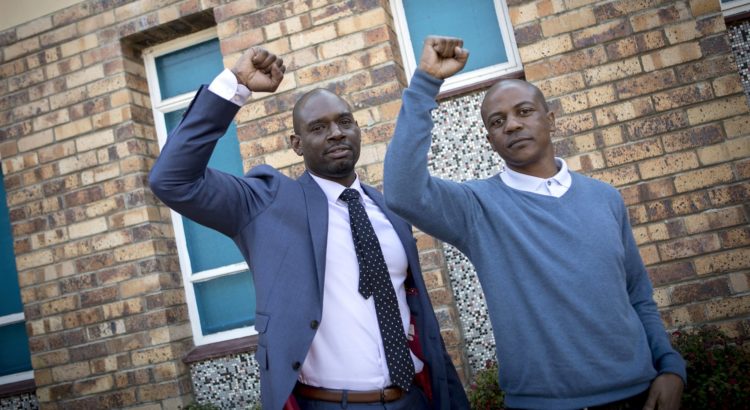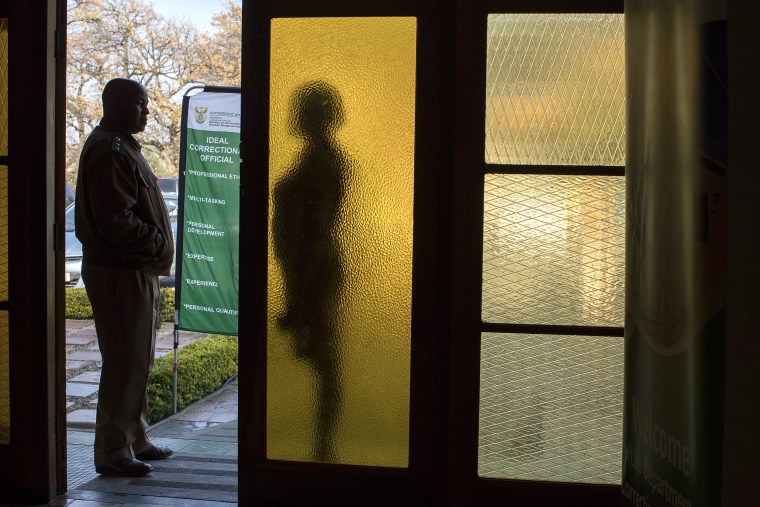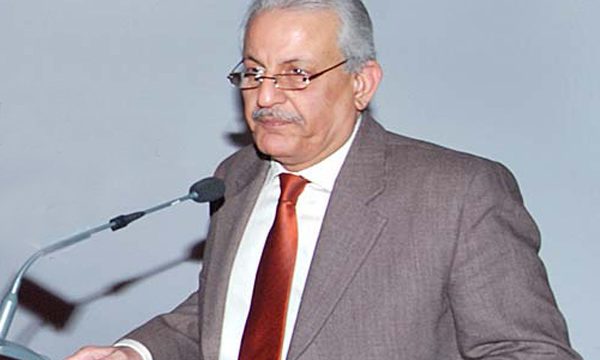Interview/ By C.J. Polychroniou, Truthout
In an increasingly unequal country, the stakes are high for debates over student debt and the prospect of free higher education. Driven by neoliberal politics, our current educational system is both a product of and a driver of deep social inequities. In this interview, world-renowned public intellectuals Noam Chomsky and Robert Pollin take on the question of who should pay for education — and how a radical reshaping of our educational system could be undertaken in the US.
This is the third part of a wide-ranging interview series with world-renowned public intellectuals Noam Chomsky and Robert Pollin. Read part one here and part two here.
C.J. Polychroniou: Noam, higher education in the US is a terribly expensive affair, and hundreds of billions are owed in student loans. First, do you think that a system of free higher education can coexist alongside tuition-charging universities? Secondly, what could and should be done about student debt?
Noam Chomsky: The educational system was a highly predictable victim of the neoliberal reaction, guided by the maxim of «private affluence and public squalor.» Funding for public education has sharply declined. Tuition has exploded, leading to a plague of unpayable student debt. As higher education is driven to a business model in accord with neoliberal doctrine, administrative bureaucracy has sharply increased at the expense of faculty and students, developments reviewed well by sociologist Benjamin Ginsburg. Cost-cutting dictated by the revered market principles naturally leads to hyper-exploitation of the more vulnerable, creating a new precariat of graduate students and adjuncts surviving on a bare pittance, replacing tenured faculty. All of this happens to be a good disciplinary technique, for obvious reasons.
For those with eyes open, much of what has happened was anticipated by the early ’70s, at the point of transition from regulated capitalism to incipient neoliberalism. At the time, there was mounting elite concern about the dangers posed by the democratizing and civilizing effects of 1960s activism, and particularly the role of young people during «the time of troubles.» The concerns were forcefully expressed at both ends of the political spectrum.
At the right end of the spectrum, the «Powell memorandum» sent by corporate lobbyist (later Supreme Court Justice) Lewis Powell to the Chamber of Commerce called upon the business community to rise up to defend itself against the assault on freedom led by Ralph Nader, Herbert Marcuse and other miscreants who had taken over the universities, the media and the government. The picture was, of course, ludicrous but it did reflect the perceptions of Powell’s audience, desperate about the slight diminution in their overwhelming power. The rhetoric is as interesting as the message, reminiscent of a spoiled three-year-old who has a piece of candy taken away. The memorandum was influential in circles that matter for policy formation.
At the other end of the spectrum, at about the same time, the liberal internationalists of the Trilateral Commission published their lament over «The Crisis of Democracy» that arose in the «terrible» ’60s, when previously apathetic and marginalized parts of the population — the great majority — began to try to enter the political arena to pursue their interests. That posed an intolerable burden on the state. Accordingly, the Trilateral scholars called for more «moderation in democracy,» a return to passivity and obedience. The American rapporteur, Harvard professor Samuel Huntington, reminisced nostalgically about the time when «Truman had been able to govern the country with the cooperation of a relatively small number of Wall Street lawyers and bankers,» so that true democracy flourished.
A particular concern of the Trilateral scholars was the failure of the institutions responsible for «the indoctrination of the young,» including the schools and universities. These had to be brought under control, along with the irresponsible media that were (occasionally) departing from subordination to «proper authority» — a precursor of concerns of the far-right Republican Party today.
There is no economic reason why free education cannot flourish from schools through colleges and university.
The right-liberal spectrum of concerns provided a good indication of what was to come.
The underfunding of public education, from K-12 through colleges and universities, has no plausible economic rationale, and in fact is harmful to the economy because of the losses that ensue. In other countries, rich and poor, education remains substantially free, with educational standards that rank high in global comparisons. Even in the US, higher education was almost free during the economically successful years before the neoliberal reaction — and it was, of course, a much poorer country then. The GI bill provided free education to huge numbers of people — white men overwhelmingly — who would probably never have gone to college, a great benefit to them personally and to the whole society. Tuition at private colleges was far below today’s exorbitant costs.
Student debt is structured to be a burden for life. The indebted cannot declare bankruptcy, unlike Trump. Current student debt is estimated to be over $1.45 trillion, [more than] $600 billion more than total credit card debt. Most is unpayable, and should be rescinded. There are ample resources for that simply from waste, including the bloated military and the enormous concentrated private wealth that has accumulated in the financial and general corporate sector under neoliberal policies.
There is no economic reason why free education cannot flourish from schools through colleges and university. The barriers are not economic but rather political decisions, skewed in the predictable direction under conditions of highly unequal wealth and power. Barriers that can be overcome, as often in the past.
Bob, what’s your own response to the question I posed above?
Robert Pollin: Student debt in the US has exploded in the past decade. In 2007, total student debt was $112 billion, equal to 0.8 percent of GDP. As of 2016, total student debt was [more than] $1 trillion, equal to 5.6 percent of GDP. Thus, as a share of GDP, student debt has risen approximately seven-fold. As of 2012, nearly 70 percent of students left college carrying student loans, and these loans averaged $26,300.
The rise in student debt reflects a combination of factors. The first is that the private costs of attending college have risen sharply, with public higher education funding having been cut sharply. Average public funding per student was 15 percent lower in 2015 than in 2008, and 20 percent lower than in 1990. The burden of the public funding cuts [has] been worsened by the stagnation of average family incomes. Thus, in 1990, average tuition, fees, room and board amounted to about 18 percent of the median household income. By 2014, this figure had nearly doubled, to 35 percent of median household income.
Despite these sharply rising costs, college enrollments have continued to rise. There are many good reasons for young people to go off to college, open their minds, develop their skills and enjoy themselves. But probably the major attraction is the fact that income disparities have increased sharply between those who go to college versus those who do not. This pattern corresponds with the stagnation of average wages since the early 1970s that we discussed [previously]. The reality under neoliberalism has been that, if you want to have a decent shot at a good-paying job with a chance for promotions and raises over time, the most important first step is to get a college education. The pressures to go to college would be much less intense if working-class jobs provided good pay and opportunities to advance, as was the pattern prior to the onset of neoliberalism.
Virtually all student debt in the US is now held by the federal government. It would therefore be a relatively simple matter to forgive some, if not all of it. This would enable young people to transition much more easily into creating their own households and families. At the same time, if the government is going to enact a major program of student debt forgiveness, it should be at least equally committed to relieving the heavy mortgage debt burdens still carried by tens of millions of non-affluent households in the aftermath of the 2007-09 financial crash and Great Recession. Similarly, the government should also be at least equally committed to both lowering the costs of college education in the first place, and [supporting] better wages and work opportunities for people who do not attend college.
The blueprint for a progressive US that the two of you have sketched out requires that a certain course of political action is carried out … which includes educating the masses in getting from here to there. How is this to be done, especially given not only the peculiarities of American political culture, but also the balkanization of progressive and left forces in the country?
Chomsky: The answer is both easy and hard. Easy to formulate (and familiar), and hard to execute (also familiar). The answer is education, organization [and] activism as appropriate to circumstances. Not easy, but often successful, and there’s no reason why it cannot be now. Popular engagement, though scattered, is at quite a high level, as is enthusiasm and concern. There are also important elements of unity, like the Left Forum, novel and promising. And the movements we’ve already mentioned. Significant efforts are underway, such as those alluded to briefly [before], and there’s no reason why they cannot be extended. While the left is famous for constant splits and internal disputes, I don’t think that’s more so now than in the past. And the general mood, particularly among young people, seems to me conducive to quite positive changes.
It is not idle romanticism to recognize the potential that can be awakened, or arise independently, in communities that free themselves from indoctrination and passive subordination.
I don’t feel that there is anything deep in the political culture that prevents «educating the masses.» I’m old enough to recall vividly the high level of culture, general and political, among first-generation working people during the Great Depression. Workers’ education was lively and effective, union-based — mostly the vigorous rising labor movement, reviving from the ashes of the 1920s. I’ve often seen independent and quite impressive initiatives in working-class and poor and deprived communities today. And there’s a long earlier history of lively working-class culture, from the early days of the industrial revolution. The most important radical democratic movement in American history, the populist movement (not today’s «populism»), was initiated and led by farmers in Texas and the Midwest, who may have had little formal education but understood very well the nature of their plight at the hands of the powerful banking and commercial sectors, and devised effective means to counter it….
I’ve been fortunate enough to have seen remarkable examples elsewhere. I recall vividly a visit to an extremely poor, almost inaccessible rural village in southern Colombia, in an area under attack from all sides, where I attended a village meeting that was concerned with protecting their resources, including irreplaceable water supplies, from predatory international mining corporations. And in particular. a young man, with very little formal education, who led a thoughtful and very informed discussion of sophisticated development plans that they intended to implement. I’ve seen the same in poor villages in West Bengal, with a handful of books in the tiny schoolroom, areas liberated from landlord rule by Communist party militancy. The opportunities and, of course, resources are vastly greater in rich societies like ours.
I don’t think it is idle romanticism to recognize the potential that can be awakened, or arise independently, in communities that free themselves from indoctrination and passive subordination. The opportunities I think are there, to be grasped and carried forward.
Pollin: I think it is inevitable that leftist forces in the US would be divided, if not balkanized, to some extent. Among the full range of people who are committed to social and economic equality and ecological [justice] — i.e. to some variant of a leftist vision of a decent society — it will always be the case that some will be more focused on egalitarian economic issues, others around the environment and climate change, others on US imperialism, militarism and foreign policy, others on race and gender equality, and still others on sexual identity.
I certainly do not have the formula for how to most effectively knit all these groups together. But I do think we can learn a lot from the major successes out there. The 2016 Bernie Sanders presidential campaign is a first obvious example. Another is the California Nurses Association/National Nurses United (CNA/NNU) that I mentioned [before]. This is a union, fighting first for the well-being of its members, who are overwhelmingly women, with a high proportion being women of color. At the same time, CNA/NNU has been in the forefront of campaigns for single-payer health care and even the Robin Hood Tax on speculative Wall Street trading.
There are other progressive organizations that have proven track records of success. One is the Los Angeles Alliance for a New Economy (LAANE), which has long been active around both living wage and other worker rights issues, as well as community economic development and environmental justice. A more recently formed coalition is NY Renews, which is comprised of 126 organizations in New York State who have come together to advance a serious program in the state to both dramatically reduce greenhouse gas emissions and expand good job opportunities. The Washington State Labor Council — part of the AFL-CIO — has also been committed and innovative in bringing together coalitions of labor and environmental groups.
The US left needs to learn and build from the achievements and ongoing work of these and similar groups. In fact, as Margaret Thatcher used to say, «there is no alternative» — if we are serious about successfully advancing a left alternative to the disasters caused by 40 years of neoliberal hegemony.
Source:
http://www.truth-out.org/opinion/item/42422-noam-chomsky-and-robert-pollin-breaking-through-the-political-barriers-to-free-education

















 Users Today : 94
Users Today : 94 Total Users : 35460000
Total Users : 35460000 Views Today : 130
Views Today : 130 Total views : 3418595
Total views : 3418595